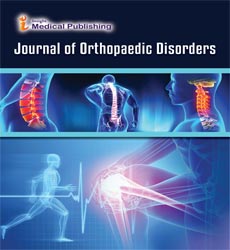The Tansen Technique - a new, easy, reliable, safe, cost-effective and useful technique in Closed Reduction and Percutaneous Fixation in Type 3 Supracondylar Fracture of the Humerus in Children
Abstract
Introduction: Closed reduction and internal fixation with K wires is the standard of care for Gartland type III supracondylar fractures of children since they are too unstable for non-operative treatment. Occasionally closed reduction of these fractures could be difficult using standard technique warranting open reduction which is associated with additional complications. We report a new intrafocal reduction technique and its results which can be used to reduce difficult supracondylar fractures reliably thus avoiding open reduction and its complications in most instances.
Materials and Methods: Consecutive series of twenty-five patients who were treated successfully using intrafocal reduction (Tansen) technique from Jan 2014-Dec 2015 were enrolled. Duration of operation, any intraoperative technique related complication, number of intraoperative image intensifier images were reviewed. Children were followed up at three weeks, six weeks, three months and six months for the adequacy of reduction, for loss of reduction of fixation and fracture healing as well as a range of motion, complications and functional outcome using Flynn's criteria.
Results: The average operation time was 30.5±10.5 minutes. The average number of intraoperative images were 15±5. The average time and number of intraoperative images were not affected by the experience of the surgeon. Average healing was 6.1± 2 weeks. All patients achieved a satisfactory cosmetic and functional result. There was no significant loss of initial reduction on follow up. The minor complication rate was 16%. There was no technique-specific complication.
Conclusion: Our simple intrafocal technique using artery forceps -‘Tansen Technique’- gives an acceptable reduction in difficult supracondylar fractures which would otherwise require open reduction. It is cost-effective, consistent, has a short learning curve and is a safe technique with potential use in day to day practice.
Open Access Journals
- Aquaculture & Veterinary Science
- Chemistry & Chemical Sciences
- Clinical Sciences
- Engineering
- General Science
- Genetics & Molecular Biology
- Health Care & Nursing
- Immunology & Microbiology
- Materials Science
- Mathematics & Physics
- Medical Sciences
- Neurology & Psychiatry
- Oncology & Cancer Science
- Pharmaceutical Sciences
